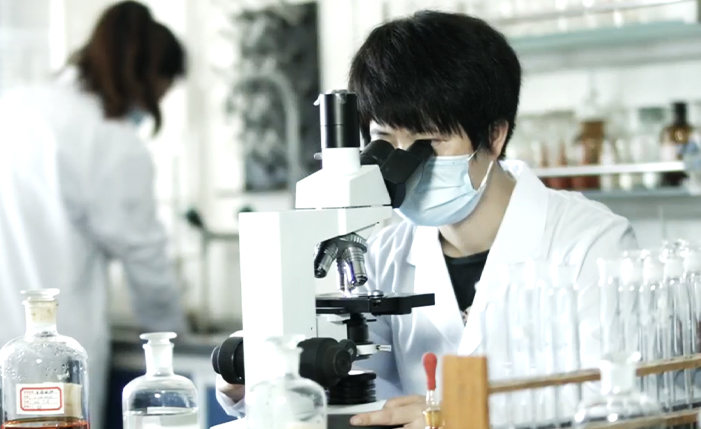
News
des . 22, 2024 20:51 Back to list
amino acid polymer chain
The Fascinating World of Amino Acid Polymer Chains
Amino acids are the building blocks of life, essential to numerous biological processes and the formation of proteins. When these amino acids link together through peptide bonds, they create polymer chains known as polypeptides. These polypeptides can fold into complex three-dimensional structures that perform a vast array of functions in living organisms. Understanding amino acid polymer chains is critical to the fields of biochemistry, molecular biology, and biotechnology.
Structure of Amino Acids
Amino acids are organic molecules comprised primarily of carbon, hydrogen, nitrogen, oxygen, and sometimes sulfur. Each amino acid has a central carbon atom bonded to four groups an amino group (-NH2), a carboxyl group (-COOH), a hydrogen atom, and a variable side chain (R group) that determines the specific characteristics of each amino acid. There are 20 standard amino acids, each with unique properties that influence the structure and function of proteins.
The Process of Polymerization
When amino acids undergo polymerization, they form peptide bonds through a condensation reaction, where the carboxyl group of one amino acid reacts with the amino group of another, releasing a molecule of water. This process continues, leading to the formation of polypeptide chains. The sequence of amino acids in a polypeptide is defined by the genetic code and is essential for determining the protein's final structure and function.
Levels of Protein Structure
The structure of proteins built from amino acid polymer chains is categorized into four levels
1. Primary Structure This is the linear sequence of amino acids in a polypeptide chain. The order of amino acids is crucial because even a single substitution can impact the protein's function significantly.
amino acid polymer chain

2. Secondary Structure This level involves the local folding of the polypeptide chain into structures like alpha-helices and beta-pleated sheets, stabilized by hydrogen bonds. The secondary structure provides overall stability and shape to the protein.
3. Tertiary Structure The tertiary structure refers to the overall three-dimensional arrangement of the entire polypeptide chain. This folding can be driven by various interactions, including hydrophobic interactions, ionic bonds, disulfide bridges, and hydrogen bonds. The tertiary structure is crucial for the biological activity of proteins.
4. Quaternary Structure Some proteins consist of multiple polypeptide chains, or subunits, that come together to form a functional protein. The arrangement of these subunits constitutes the quaternary structure, enhancing the protein's functionality through cooperative interactions among subunits.
Importance in Biological Systems
Amino acid polymer chains play a pivotal role in a myriad of biological functions, from catalyzing biochemical reactions to serving as structural components in cells. Enzymes, which are proteins that speed up chemical reactions, rely on their precise three-dimensional shapes to bind substrates effectively. Structural proteins, such as collagen and keratin, provide support and protection to tissues. Furthermore, transport proteins, like hemoglobin, enable the movement of vital molecules across cell membranes and throughout the body.
Applications in Biotechnology
The knowledge of amino acid polymer chains extends beyond basic biology; it has profound implications in biotechnology. Advances in genetic engineering allow scientists to manipulate amino acid sequences for the design of novel proteins with specific functions. These engineered proteins are invaluable in developing therapeutic agents, conducting research, and producing biofuels.
Conclusion
The study of amino acid polymer chains not only gives insight into the fundamental processes of life but also opens doors to innovative applications in science and medicine. As our understanding of these complex molecules continues to grow, so too does our potential to harness their power to address the challenges of the future. Whether through developing new treatments for diseases or creating sustainable solutions for energy, the significance of amino acid polymer chains cannot be overstated.
-
OEM Chelating Agent Preservative Supplier & Manufacturer High-Quality Customized Solutions
NewsJul.08,2025
-
OEM Potassium Chelating Agent Manufacturer - Custom Potassium Oxalate & Citrate Solutions
NewsJul.08,2025
-
OEM Pentasodium DTPA Chelating Agent Supplier & Manufacturer High Purity & Cost-Effective Solutions
NewsJul.08,2025
-
High-Efficiency Chelated Trace Elements Fertilizer Bulk Supplier & Manufacturer Quotes
NewsJul.07,2025
-
High Quality K Formation for a Chelating Agent – Reliable Manufacturer & Supplier
NewsJul.07,2025
-
Best Chelated Iron Supplement for Plants Reliable Chelated Iron Fertilizer Supplier & Price
NewsJul.06,2025
